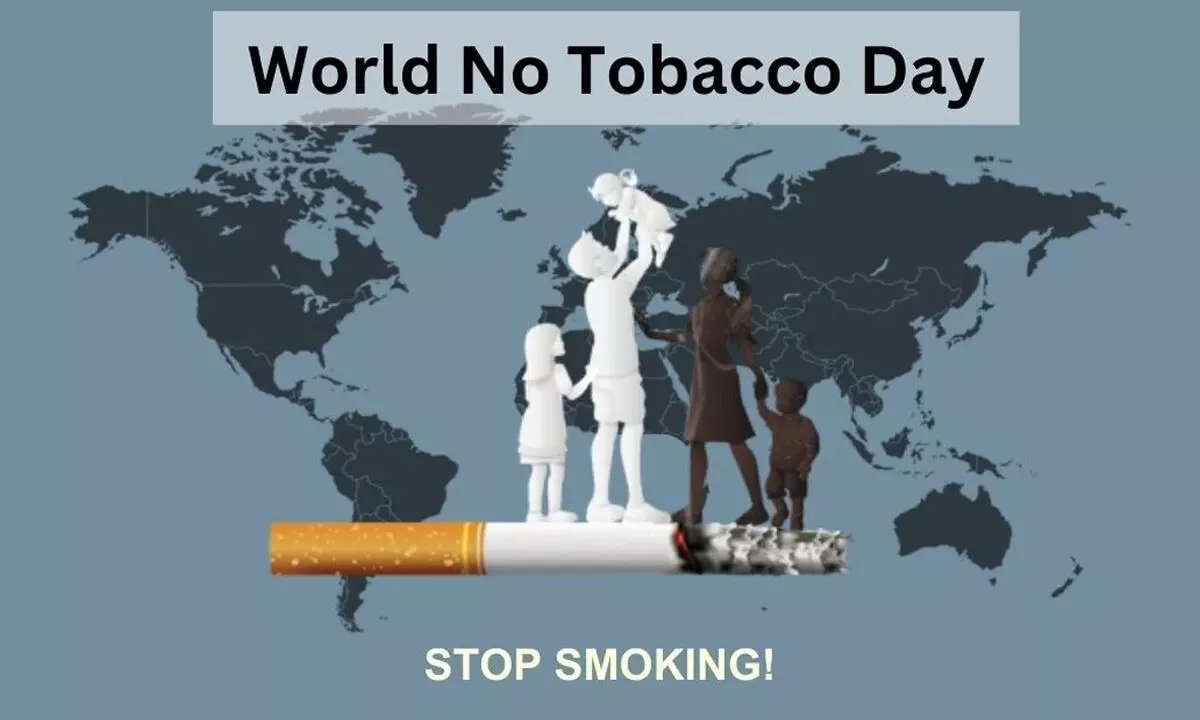Just In
World No Tobacco Day 2024: Understanding the Health Dangers of Passive Smoking


On May 31st, the world observes No Tobacco Day, a day dedicated to raising awareness about the detrimental effects of tobacco use and advocating for effective policies to reduce tobacco consumption.
On May 31st, the world observes No Tobacco Day, a day dedicated to raising awareness about the detrimental effects of tobacco use and advocating for effective policies to reduce tobacco consumption. This year, the spotlight is on the often-overlooked but significant health dangers of passive smoking, also known as secondhand smoke.
What is Passive Smoking?
Passive smoking occurs when non-smokers inhale the smoke exhaled by smokers or the smoke from the burning end of a cigarette, cigar, or pipe. This involuntary exposure to tobacco smoke can happen in various settings, including homes, workplaces, public areas, and vehicles.
Components of Secondhand Smoke
Secondhand smoke contains a mix of over 7,000 chemicals, hundreds of which are toxic, and at least 70 are known to cause cancer. The harmful components include:
• Nicotine: An addictive substance that affects the heart and nervous system.
• Carbon Monoxide: A poisonous gas that reduces the oxygen-carrying capacity of the blood.
• Tar: A residue containing cancer-causing substances.
• Formaldehyde: A chemical that can cause respiratory issues and cancer.
• Benzene: Linked to leukemia and other blood disorders.
Health Risks Associated with Passive Smoking
1. Respiratory Infections and Diseases
Exposure to secondhand smoke can cause or exacerbate respiratory problems. Non-smokers, especially children, are at a higher risk of developing bronchitis, pneumonia, and asthma. In adults, it can lead to chronic obstructive pulmonary disease (COPD) and worsen existing respiratory conditions.
2. Cardiovascular Diseases
Secondhand smoke is a significant risk factor for cardiovascular diseases. It increases the risk of heart attacks, strokes, and hypertension. Non-smokers exposed to secondhand smoke have a 25-30% higher chance of developing heart disease compared to those who are not exposed.
3. Cancer
Passive smoking is a proven cause of lung cancer in non-smokers. It is estimated that living with a smoker increases the risk of lung cancer by 20-30%. Additionally, secondhand smoke exposure is linked to cancers of the larynx, pharynx, nasal sinuses, brain, bladder, rectum, stomach, and breast.
4. Impact on Children and Pregnant Women
Children and fetuses are particularly vulnerable to the harmful effects of secondhand smoke. It can lead to:
• Sudden Infant Death Syndrome (SIDS): Babies exposed to secondhand smoke have a higher risk of SIDS.
• Low Birth Weight: Pregnant women exposed to secondhand smoke are more likely to give birth to underweight babies, which can lead to various health complications.
• Developmental Issues: Exposure can affect cognitive and physical development in children.
5. General Health Consequences
Secondhand smoke can also cause a range of general health issues, including eye irritation, headaches, nausea, and dizziness. Long-term exposure can lead to more severe health problems, such as reduced lung function and impaired immune system function.
Protecting Yourself and Loved Ones
Understanding the dangers of passive smoking underscores the importance of creating smoke-free environments. Here are some steps to protect yourself and your loved ones:
• Implement Smoke-Free Policies: Advocate for and adhere to smoke-free policies in homes, cars, workplaces, and public spaces.
• Educate Others: Raise awareness about the risks of secondhand smoke and encourage smokers to quit or smoke outside, away from non-smokers.
• Support Quitting: Provide support to smokers in your life to help them quit, including accessing cessation programs and resources.
• Choose Smoke-Free Venues: Opt for restaurants, hotels, and other public places that enforce smoke-free policies.
Conclusion
On this World No Tobacco Day 2024, let’s commit to reducing the harmful impact of tobacco by addressing the dangers of passive smoking. By promoting smoke-free environments and supporting tobacco cessation, we can protect the health of non-smokers and work towards a healthier, smoke-free future. Remember, the air we share should be free of toxic tobacco smoke for everyone's well-being.

© 2024 Hyderabad Media House Limited/The Hans India. All rights reserved. Powered by hocalwire.com






